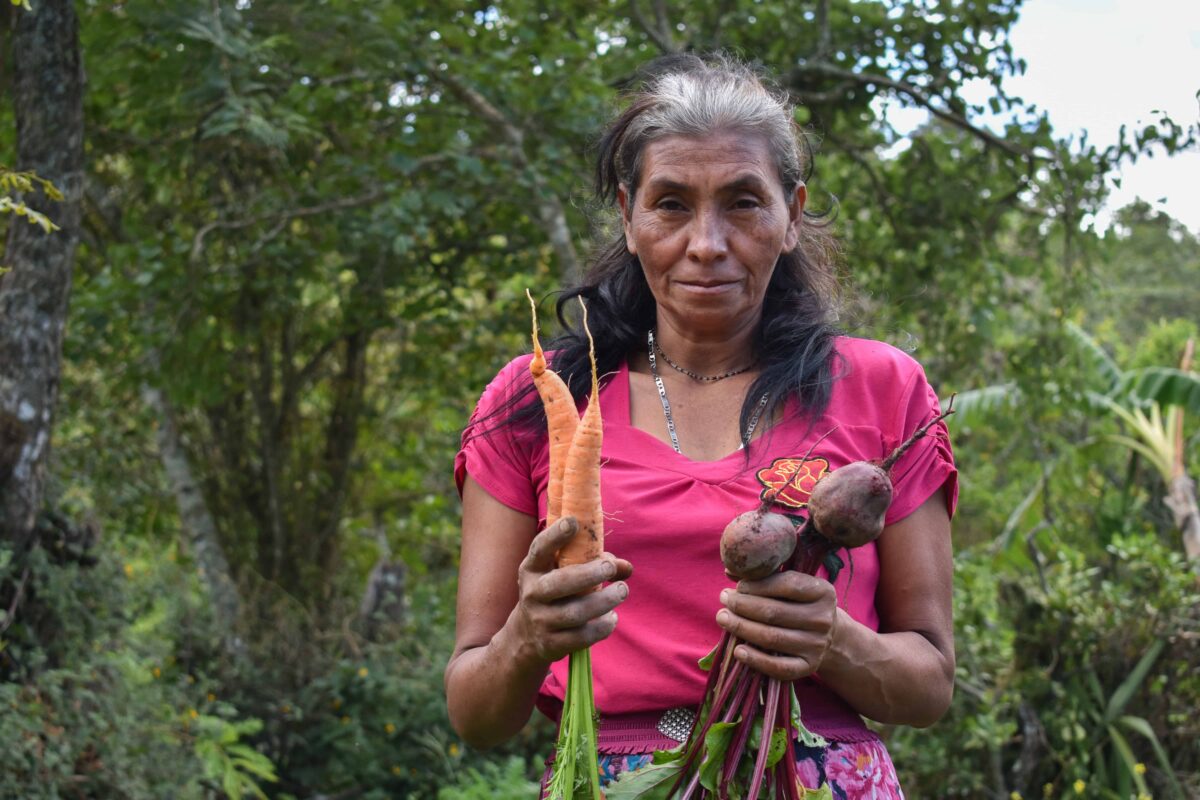Na comunidade do Corredor Seco Hondurenho de Oroquina, Jairo é um mecânico de motocicletas certificado que não conseguiu emprego após se formar em uma escola de formação técnica. “A falta de oportunidades de emprego aqui obriga-nos a migrar ou a sair do nosso país,” ele lamenta.
Esta história é comum entre os jovens hondurenhos que lutam para melhorar as suas vidas através da educação e do trabalho árduo.. Mas a mudança é possível, particularmente quando um uma compreensão mais matizada das dificuldades que os jovens enfrentam quando fazem a transição para o mercado de trabalho – e como os erros podem traduzir-se numa decisão de migrar.
Felizmente, através do Creative-liderado Aliança do Corredor Seco projeto, que foi apoiado pelo Banco Mundial e pelo governo hondurenho, Jairo co-desenvolveu um plano de negócios financeiramente viável para sua oficina de motocicletas. Além de técnicas críticas, planejamento de negócios e assistência administrativa, ele recebeu ativos produtivos como máquinas para iniciar e sustentar seu negócio. Hoje, Jairo presta um serviço essencial à sua comunidade de Oroquina, gera emprego para terceiros e tem um fluxo de renda estabelecido em um setor pelo qual é apaixonado.
A comunidade de Jairo também é fundamental para a segurança alimentar do país, onde mais do que 30 por cento dependem da agricultura para obter emprego, tornando-o um setor oportuno para os jovens conseguirem um emprego. No entanto, esta região é uma das mais vulneráveis às alterações climáticas e aos seus impactos, combinado com as diversas aspirações dos jovens por trabalho além da agricultura, o que cria uma necessidade de oportunidades de rendimento diversificadas.
Juventude rural em Honduras: Insights e desafios
Honduras é uma das nações mais pobres das Américas. O país sofre de baixos níveis de educação e fracos resultados de aprendizagem, informalidade e instabilidade dos meios de subsistência, altos níveis de criminalidade e violência, e profunda desigualdade. Mais da metade do país está envelhecido 25 e mais jovem e quase 28 por cento dos jovens hondurenhos não estão empregados nem prosseguem estudos superiores.
Os jovens perderam a fé na educação e na sua promessa de mobilidade social, como evidenciado pela elevada taxa de abandono escolar do país, que é particularmente grave para 15- para jovens de 17 anos em comunidades rurais. A conectividade baixa e desigual do país e a falta de competências digitais por parte dos estudantes, professores, e os pais deixam para trás muitas crianças rurais e pobres, resultando numa enorme perda de aprendizagem para os jovens mais vulneráveis das Honduras – um problema que foi agravado por catástrofes naturais (Furacões Eta e Iota) e encerramentos prolongados de escolas relacionados com a pandemia.
Os jovens que concluem a educação e fazem a transição para o mercado de trabalho enfrentam restrições adicionais. Empregos na agricultura dominam o mercado de trabalho, mas muitas vezes são de baixa qualidade, mal pago, e oferecem pouca esperança para a geração de riqueza a longo prazo. Sem surpresa, muitos jovens rurais desejam trabalhar fora da agricultura, criando uma necessidade de oportunidades de renda diversificadas.
Oportunidades de trabalho mal remuneradas, baixos níveis de educação, investimento limitado do setor privado, dependência significativa de pequena escala, agricultura com poucos insumos, vulnerabilidade às mudanças climáticas, e políticas que ignoram a juventude rural contribuem para a emigração- um resposta comum à instabilidade dos meios de subsistência e ao acesso insuficiente aos recursos, particularmente em comunidades rurais mal servidas.
Soluções inclusivas e responsivas para atender às complexas necessidades da juventude hondurenha
Com tantos jovens fora da escola e oportunidades de emprego limitadas, espera-se que muitos deles necessitem de apoio corretivo para regressar à educação formal, outros exigirão oportunidades educativas formais e não formais alternativas para adquirir competências académicas e de vida básicas, e outros necessitarão de formação e apoio específicos para desenvolver os conjuntos de competências adequados para entrar no mercado de trabalho.
Evidências extraídas da implementação do Creative pela Creative Aliança do Corredor Seco fornece insights sobre as necessidades complexas da juventude rural e como essas necessidades poderiam ser efetivamente atendidas na concepção da programação futura. Entre os insights:
Direcionar intervenções educativas para municípios com elevada emigração: Os governos devem dar especial atenção às intervenções educativas nos municípios com elevada emigração para enfrentar os desafios únicos que enfrentarão os jovens que já tentaram migrar irregularmente e são devolvidos às suas comunidades. É menos provável que estes jovens reingressem e completem a escolaridade do que optem por migrar irregularmente novamente, especialmente se não encararem a educação como um caminho para oportunidades económicas. Além de horários flexíveis e suporte corretivo, esses alunos têm necessidades socioemocionais que exigem treinamento direcionado de professores, materiais, e recursos em práticas de aprendizagem social e emocional.
Ofereça treinamento ou educação flexível. Os jovens rurais precisam de conhecer e compreender as diversas opções disponíveis para completarem os seus percursos educativos.. Campanhas de matrícula na educação formal, e o acesso a ofertas educacionais não formais credenciadas e modalidades alternativas são essenciais. Em Honduras, é necessário continuar a desenvolver modalidades flexíveis adaptadas à juventude rural e expandir a conectividade e a formação em competências digitais às comunidades rurais mal servidas, o que exige alavancar os investimentos do sector privado através de parcerias eficazes e quadros políticos apropriados.
Diversificar as oportunidades de meios de subsistência. A juventude rural opera num mercado de trabalho desafiante, com elevados níveis de desemprego. O empreendedorismo oferece uma oportunidade para os jovens aprenderem as habilidades necessárias para prosperar na economia atual. Fornece aos jovens habilidades interpessoais, incentiva a criatividade e desenvolve a resiliência dos jovens. Prepara os jovens para aproveitarem os seus talentos individuais para criar soluções que respondam às necessidades não satisfeitas da comunidade, ao mesmo tempo que geram rendimentos. Quer os jovens decidam que querem tornar-se agricultores ou iniciar um pequeno negócio, ter opções flexíveis que respondam tanto ao mercado local como aos interesses dos jovens garante aos jovens- independentemente do caminho que escolheram- têm meios de subsistência dignos.
Aumentar os papéis de liderança e a visibilidade dos jovens. Para que os jovens que vivem em comunidades rurais alcancem todo o seu potencial pessoal e profissional, devem ter a oportunidade de serem contribuintes activos do desenvolvimento local. Os jovens entendem o que precisam, e quando adequadamente apoiados podem inovar soluções para enfrentar os seus próprios desafios. Quando os jovens estão equipados com habilidades e recursos, e recebem espaço para liderar, jovens criam empregos, construir redes colaborativas e comunidades de conhecimento, e contribuir para soluções locais baseadas na comunidade. Isto só é possível se os projetos abordarem os jovens como contribuintes únicos e iguais.
Mais afetados – maiores oportunidades
Os jovens são, de longe, um dos grupos mais afetados por esta crise de aprendizagem e de emprego, mas também aqueles com mais esperança e potencial para construir um futuro melhor para si e para as suas comunidades. É nossa responsabilidade proteger os jovens e colocá-los no comando para que possam liderar e resolver os problemas mais difíceis que as suas comunidades enfrentam.. Quando os programas de desenvolvimento respondem às diversas necessidades dos jovens, os jovens podem realizar suas aspirações, satisfazer suas necessidades básicas, e optam por permanecer em suas próprias comunidades e contribuir para o desenvolvimento local e nacional.
Daniela Farinas é gestora de projetos da Divisão de Crescimento Económico. Como parte da equipe de programas, ela trabalha na Juventude, Meios de subsistência, e área de prática agrícola.
Claudia Salazar Suarezis Gerente Técnica Sênior, Especialista em América Latina e Caribe na Divisão de Educação para o Desenvolvimento. Como parte da equipe técnica, ela trabalha na intersecção de técnicas, desenvolvimento de negócios e trabalho estratégico focado na expansão do alcance da Creative na região da ALC.
Mariellen Jewers é consultora técnica do Centro para Migração e Estabilização Econômica da Creative.



